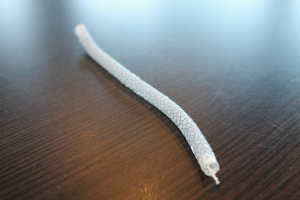|
Leading off the 2nd EULIS Meeting in Copenhagen was a special pre-conference symposium on metal stenting of the ureter on September 4th. This special event took place in the Copenhagen University Hospital, the Rigshospitalet, and featured live surgery demonstrations. Mr. Noor Buchholz was key in bringing together all four companies producing metal stents for the first time. |
| “About two years ago, I had a vision for bringing together the four companies involved in the development and production of metal stents. As the EULIS Section meeting was approaching, we decided to piggy-back the stent workshop as a pre-meeting symposium,” Buchholz explained. “Metal stents are very much a niche market, so I think it’s more important for the companies to work together to spread awareness of these products, rather than compete for a small target audience. I’m trying to raise awareness of the use of metal stents in urology, because I think they are very useful for the “right” patients.” Mr. Buchholz points out two major problems of preconceptions about metal stenting. “We’ve seen metal stents in the past that simply didn’t work, so older urologists won’t touch them. The second problem is related: younger urologists aren’t being taught about them, and might not even be familiar with them.” According to Buchholz, this newer generation of stents, as developed in the past ten years has one key advantage over the older models: they are much easier to place and remove, which can be done through minimally invasive surgery. The biggest advantage compared to contemporary competitors like the double-J stent is their longevity: “The initial purchase price is considerably higher, but because the stents do not have to be replaced two or three times per year like plastic stents, the patient requires less surgery, making it cost-neutral in the first year. From the second year onward, it’s an annual saving of some €5000 per patient. And the patient won’t have to undergo regular surgery, with all of the disadvantages thereof. It’s a great solution for patients who need long-term stenting. One of my patients has had a stent for 80 months now.” The four companies involved in the symposium were PNN Medical with its Memokath thermolabile nitinol stent, Cook Medical with its grooved metal double-J Resonance stent, Allium with its self-expanding polyurethane stent, and Taewoong with its Uventa Ureteral Stent, another self-expanding stent. The live surgery demonstrations were given for each of the four companies’ stents. Other presentations at the symposium showed the current state of developments, techniques for placement and maintenance, as well as a look into the future of metal stents. Biocompatibility and biodegradability are two important properties for improved treatment of patients. Other innovations are the antibody-coated stents, nanotube coating and radioactive stents for internal treatment. An absorbable magnesium metal stent is to combine the inertness of biomaterial with the stability of a metal. |
|
+82 31-904-6196contact@stent.net
HOME
NEWS
News

